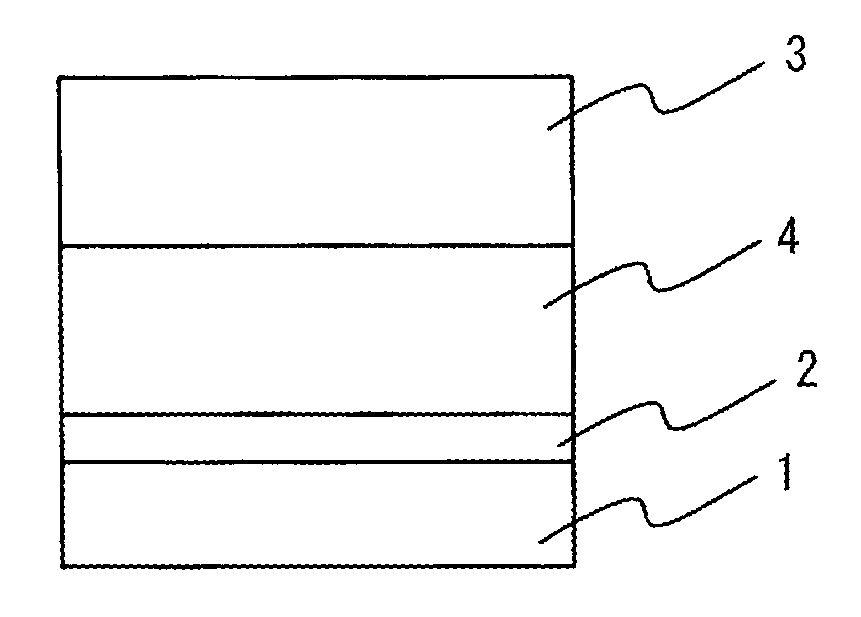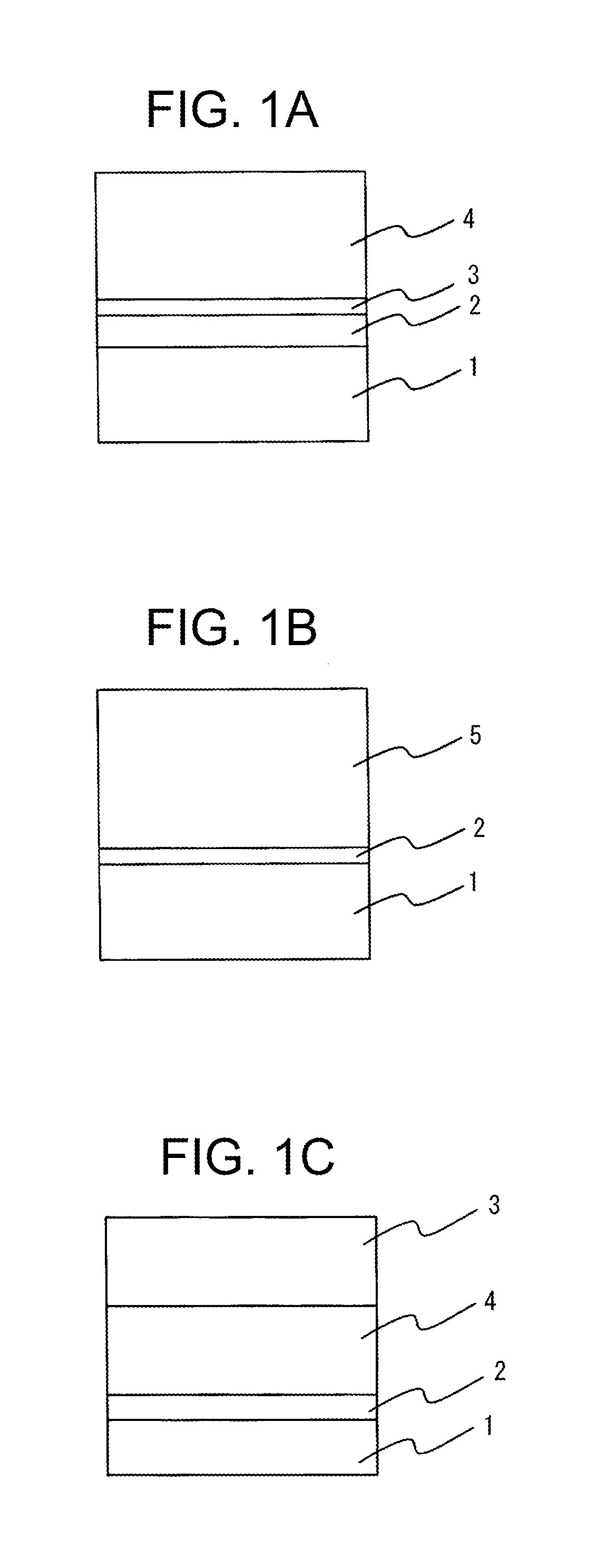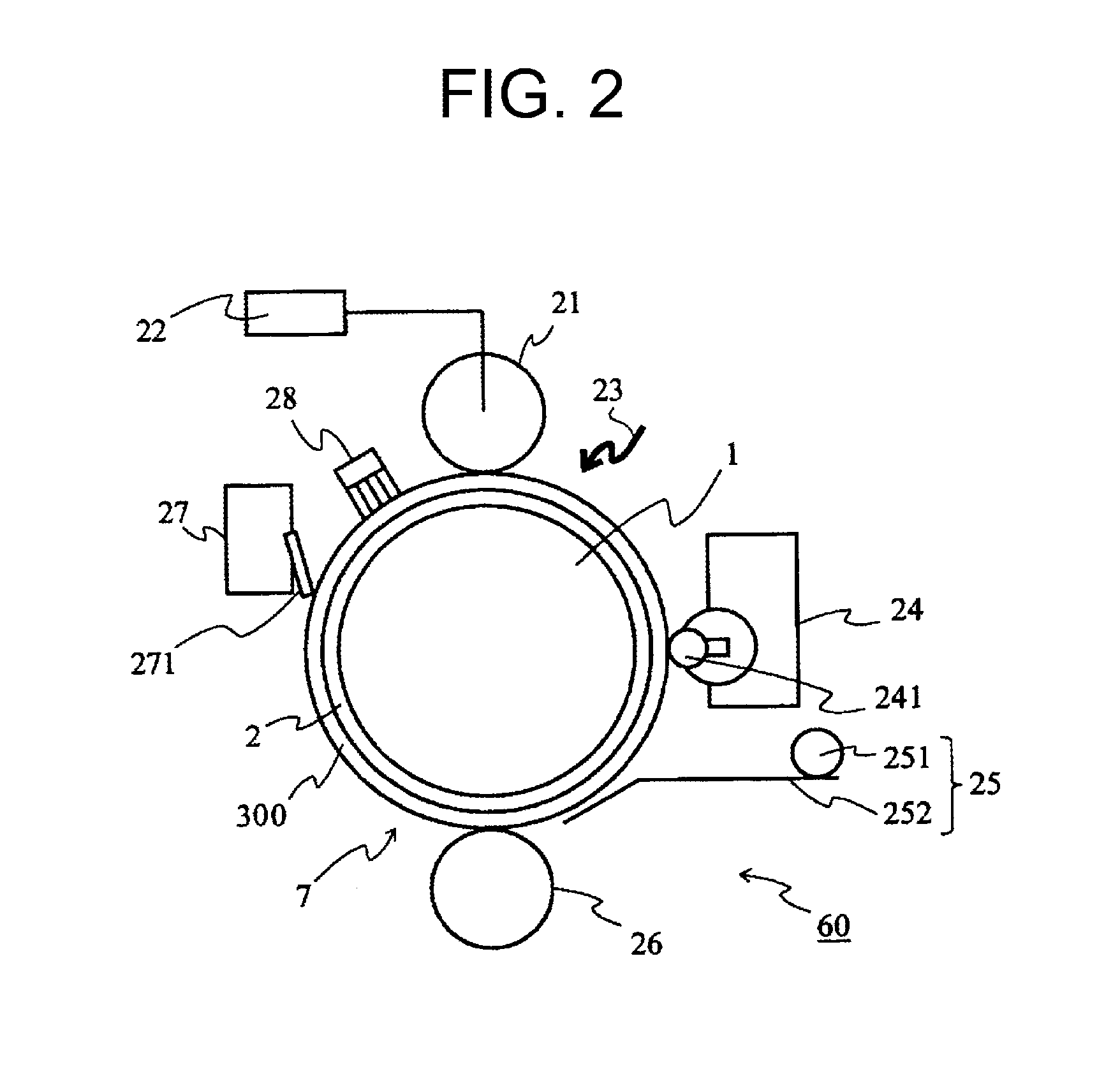Electrophotographic photoreceptor, method for manufacturing the photoreceptor, and electrophotographic apparatus including the photoreceptor
a photoreceptor and electrophotography technology, applied in the direction of electrographic process, instruments, corona discharge, etc., can solve the problems of increasing the transfer burden, increasing the difference in image density, and no satisfactory structures have been developed, and achieve excellent photoresponsivity, gas resistance and solvent crack resistance, and favorable environmental characteristics
- Summary
- Abstract
- Description
- Claims
- Application Information
AI Technical Summary
Benefits of technology
Problems solved by technology
Method used
Image
Examples
example 1
[0069]An alcohol-soluble nylon (manufactured by Toray Industries, Inc., trade name: “CM8000”) in an amount of 3 parts by mass and aminosilane-treated titanium oxide fine particles in an amount of 7 parts by mass were dissolved and dispersed in 90 parts by mass of methanol, thus preparing coating liquid A. This coating liquid A was immersion-coated on the outer circumference of an aluminum cylinder having an outer diameter of 30 mm, which is formed as a conductive substrate 1. The coating liquid on this cylinder was dried at 100° C. for 30 minutes, to obtain an undercoating layer 2 having a film thickness of 3 μm.
[0070]Y-type titanyl phthalocyanine in an amount of 1 part by mass as a charge generating material and a polyvinyl butyral resin (manufactured by Sekisui Chemical Co., Ltd., trade name: “S-LEC KS-1”) in an mount of 1.5 parts by mass as a resin binder were dissolved and dispersed in 60 parts by mass of dichloromethane, thus preparing coating liquid B. This coating liquid B wa...
example 2
[0072]A photoreceptor was produced by the same method as the one used in Example 1, except that the additive expressed by the chemical formula (6-1) that was used in Example 1 was replaced with the additive expressed by the chemical formula (6-2).
example 3
[0073]A photoreceptor was produced by the same method as the one used in Example 1, except that the molecular weight of the resin (1) that was used in Example 1 was changed to 50,000 and that the amount of the additive to 0.2 parts by mass.
PUM
| Property | Measurement | Unit |
|---|---|---|
| thickness | aaaaa | aaaaa |
| thickness | aaaaa | aaaaa |
| thickness | aaaaa | aaaaa |
Abstract
Description
Claims
Application Information
 Login to View More
Login to View More - R&D
- Intellectual Property
- Life Sciences
- Materials
- Tech Scout
- Unparalleled Data Quality
- Higher Quality Content
- 60% Fewer Hallucinations
Browse by: Latest US Patents, China's latest patents, Technical Efficacy Thesaurus, Application Domain, Technology Topic, Popular Technical Reports.
© 2025 PatSnap. All rights reserved.Legal|Privacy policy|Modern Slavery Act Transparency Statement|Sitemap|About US| Contact US: help@patsnap.com



